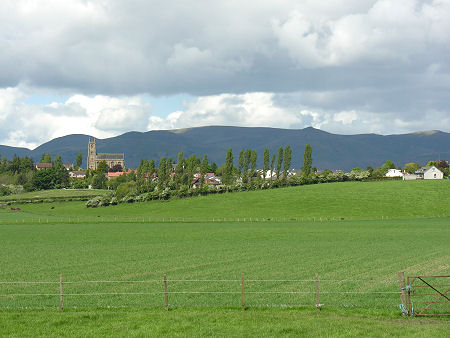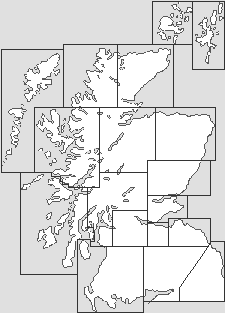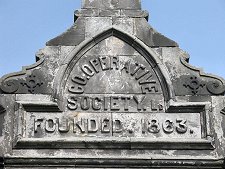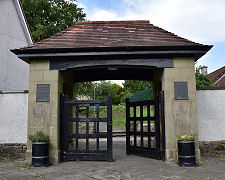 The Centre of Clackmannan |
Clackmannanshire emerged from the last reorganisation of local government in Scotland as by far the smallest smallest and least populous local authority area in the country. But while many have heard of Clackmannanshire, rather fewer have been to the town it took its name from, Clackmannan.
Clackmannan is a puzzling place. The first puzzle is finding it at all. It's well signposted from the A907, but the absence of local "town centre" signposts means it's all too easy to find yourself driving out of the town before you've properly driven into it.
The second puzzle is its harbour. Clackmannan's early growth owed much to its port on the tidal stretch of the River Black Devon where it flowed into the River Forth. Nothing now remains of the port and Clackmannan itself stands on rising ground a good mile from the River Forth. (Continues below images...)
 Clackmannan from the South, with the Ochils in the Background |
 View Down High Street |
It was the silting up of Clackmannan's port and the faster growth of nearby Alloa with its port facilities on the River Forth that solves the third puzzle: why Clackmannan was displaced by Alloa as the county town of Clackmannanshire in 1822.
The result of all this is that Clackmannan has a slightly forgotten feel: though for a web site specialising in the Undiscovered, that has to be a plus point. In layout it is strangely reminiscent of Edinburgh's Old Town. One long street - Main Street in its lower reaches and High Street as it passes the attractive Parish Church - runs up the rising spine of a ridge towards a summit on which you find a castle.
The castle, Clackmannan Tower, stands on the top of King's Seat Hill in open fields some way clear of the uphill edge of the town itself. What you find is a magnificent tower house built of golden stone, five storeys in height.
The heart of Clackmannan revolves around its market place at the top of Main Street. Here you find the remains of the town's Tolbooth. Built in 1592 as court, prison and administrative centre when Clackmannan was at the height of its powers, only the belfry tower now survives. Next to it is the Mercat Cross, whose shaft dates back to the 1600s and still shows signs of wear from the chains of prisoners whose penalty was to be left attached to it.
And next to the Mercat Cross and the Tolbooth lies the answer to the final puzzle about Clackmannan, its rather odd name. This come from the "Clack" or Stone of Mannan, an ancient whinstone boulder named after the Celtic God Manau. This started life to the south of the town before being moved to Clackmannan Tower and then in 1833 being placed on top of a block of the same stone brought here from the outcrop on which the Wallace Monument is built near Stirling.
 Clackmannan Tower |

|
|
|
Visitor InformationView Location on MapWhat3Words Location: ///pegs.obey.edits |
 Mercat Cross |
 The Stone of Mannan |
 Another View of the Stone |
 ...and its Support |
 The Tolbooth Tower |







